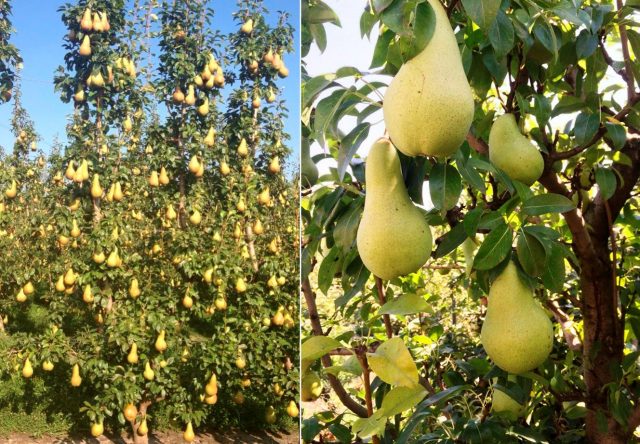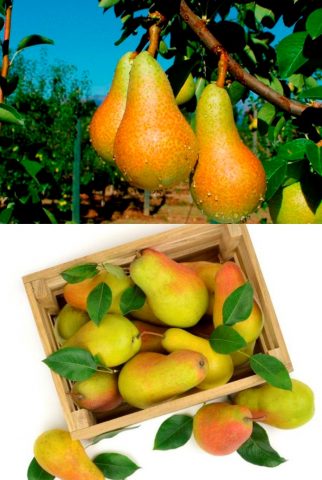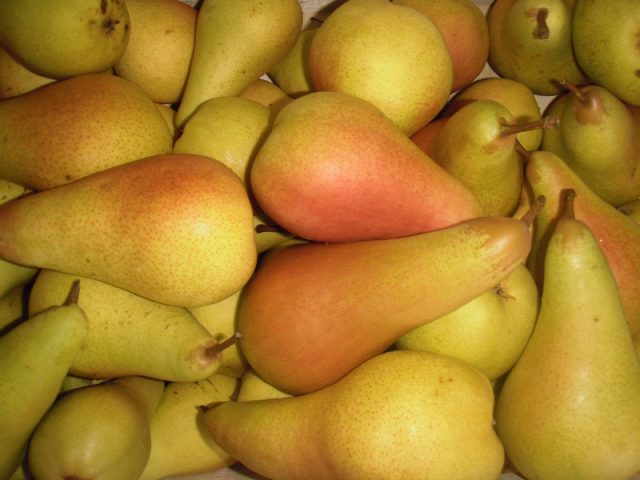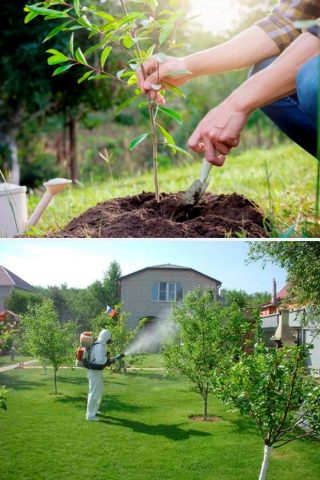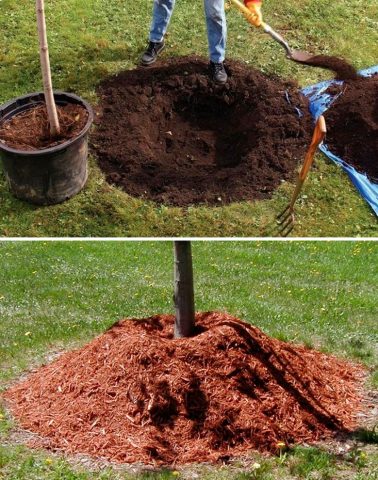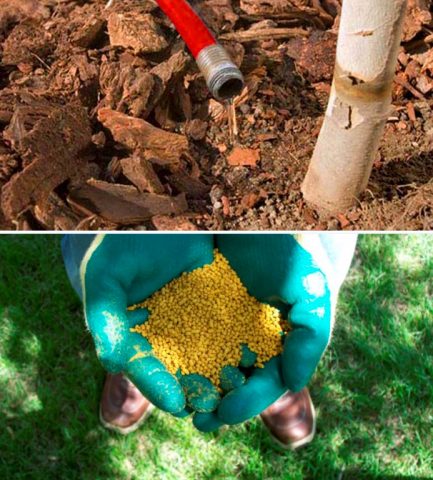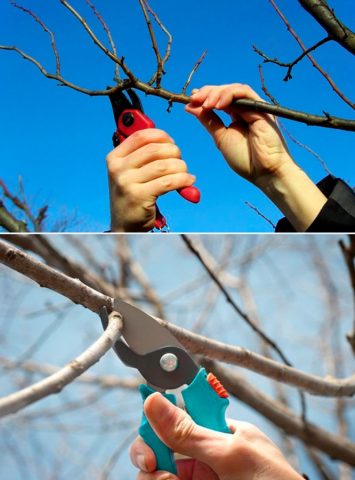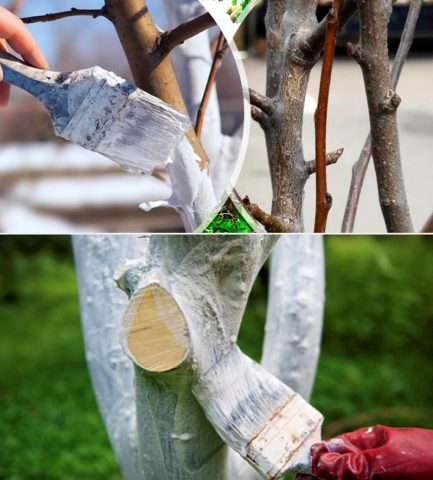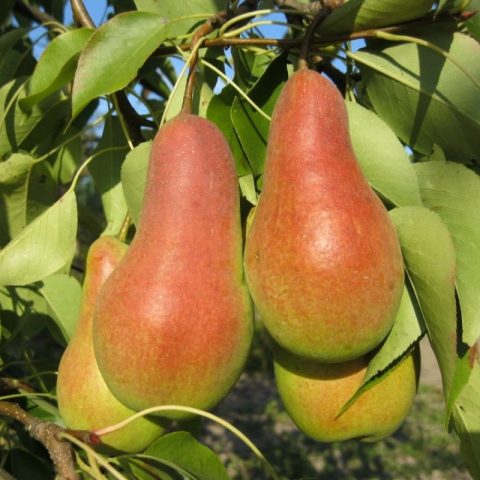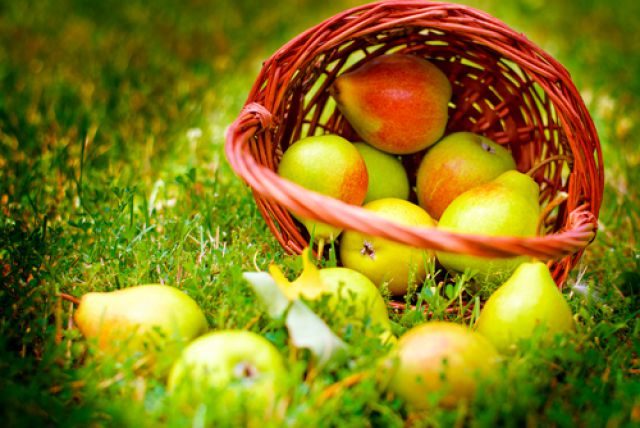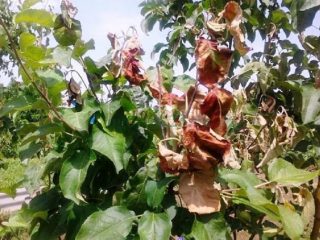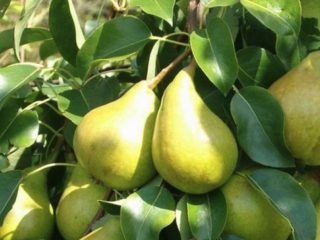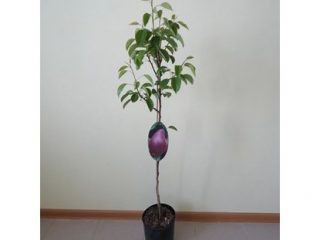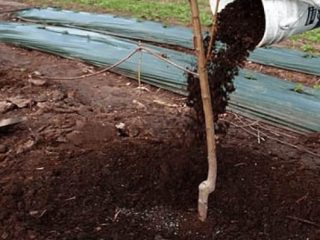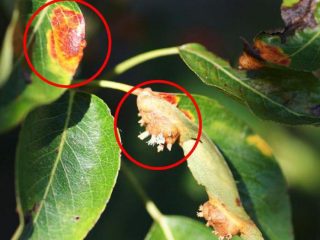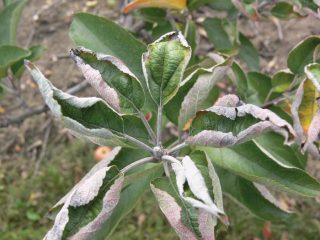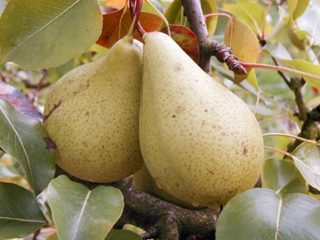Content
Developed by French breeders, the Abbot Vettel pear has become popular since the late 19th century. The variety quickly spread along the Mediterranean coast due to its taste. Fruits well in warm, humid climates. Therefore, they are grown in industrial plantings in the south of Spain, Italy, and France. To grow this variety in the Russian region, you need to know the conditions for its successful growth.
Description of Abbot Fetel pear
Russian gardeners have shown great interest in the French garden cultivar for the excellent quality of the fruits and good adaptability in a new place. The description of the Abbot Fetel pear variety and its image in the photo will help novice gardeners not to confuse it with other representatives of the Rozanov family:
- the tree is medium-sized and reaches 3-4 m in height;
- the crown is wide, pyramidal in shape, with dense foliage;
- leaves are large, light green;
- stems grow at an angle of 400-450, with further deviation to a horizontal position;
- The fruits are elongated, large, light in color with a pink side on the sunny side.
When the pears begin to ripen, you need to make sure that they do not break off the branches with their weight and, if necessary, garter. This is especially true for young trees with thin shoots.
The main fruiting occurs in the 8th year. The Abbot Vettel pear variety can produce crops for 2 decades.
The plant is considered resistant to such unfavorable conditions as:
- cold – tolerates frosts down to about -170WITH;
- insects and fungal diseases;
- drying out of the soil.
The pear is self-fertile - it pollinates itself. Therefore, it is not necessary to plant additional pollinators in the neighborhood. However, it was noted by gardeners that the proximity of other pear varieties has a beneficial effect on the yield of the Abbot Vettel variety.
Characteristics of pear fruit Abbot Vettel
If you follow the recommended rules of agricultural technology for pears, then 3-4 years after planting in early September you can already harvest the first harvest. Abbot Vettel pears have proven themselves with excellent taste and rich vitamin composition.
The fruits are in great demand due to their appetizing appearance:
- oblong shape, up to 20 cm long, up to 8 cm in diameter and weighing 200-250 g;
- thin-barked, yellowish-green in color with a pink flank when ripe;
- The pulp is often white, but it can also be cream-colored, juicy and sweet in taste with a pleasant delicate aroma.
When fully ripe, they can hang on the tree for a long time. When removing fruits, you should try not to damage them. Pears are stored in the refrigerator at a temperature no higher than +50C. Before storage, the fruits are allowed to rest in a dry room for several days.
The taste and texture of the Abbot Vettel fruits allow you to eat them fresh or prepare them:
- compotes;
- jams;
- jam;
- marmalade;
- juices
Pros and cons of the variety
Those who are thinking about growing the Abbot Vettel pear on their plot need to know that this cultivar has more advantages than disadvantages. Its positive qualities have made it possible for several centuries not only to preserve the variety, but also to expand the growing area. The main advantages of the variety:
- sweet juicy pulp;
- full presentation;
- good safety during transportation;
- long shelf life;
- drought resistance;
- self-pollination of flowers;
- resistance to diseases and pests.
There are few disadvantages. Russian gardeners note the main one: poor frost resistance. Already at a temperature of about -200The tree may freeze and not be reborn in the spring. Therefore, in cold regions of Russia, this variety must be covered before the onset of frost. Another disadvantage is the average yield. However, this indicator varies greatly under different growing conditions.
Optimal growing conditions
High yield depends on the composition of the soil. For a pear, it should be light and fertile. The Abbot Vettel variety does not grow in soil with high acidity, but prefers neutral soil. To balance the condition of the soil, dig up the area and add lime or wood ash to it.
Overmoistening of the roots is considered harmful to the Abbot Vettel pear. Therefore, it is necessary to ensure that the groundwater in the area is deeper than 3 m. The area for the pear should be open to the sun. Sunlight is necessary to obtain a tasty, rich harvest.
Planting and caring for the pear Abbot Vettel
Abbot Vettel pear is planted in spring or autumn. Autumn planting is considered the most favorable. The seedling should be 1-1.5 years old. If the root system is open, then you need to make sure that it is healthy. Leaves and shoots should also be free of signs of disease and wilting.
The planting location, the condition of the seedling and, subsequently, the necessary care of the crop have a great influence on the harvest:
- regular feeding;
- necessary watering;
- measures to protect against diseases and rodents;
- loosening the soil;
- soil mulching;
- whitewashing the trunk.
Proper preparation for winter is of particular importance for regions of Russia with cold winters, since the Abbot Vettel pear can die in severe frosts.
Landing rules
It is better to plant Abbot Vettel pear seedlings in the garden next to the apple trees. If planting is carried out in rows, then the distance between trees in a row should be at least 5 m, and between rows - 6 m. The area should be well lit by the sun and, preferably, without drafts.
The seedlings are inspected, dry roots are removed and treated with a mixture of clay and ash in a 1:2 ratio. If the root system is closed, then the seedling is placed in a hole along with a lump of earth. After preparing the site and seedlings, they proceed to planting:
- Dig a hole about 0.8 m deep and 1.0 m wide.
- Pour some earth into the hole to make a mound.
- A seedling is placed on a mound and the roots are straightened.
- Fill the hole with soil to the level of the site.
- Lightly tamp around the trunk.
- Make a hole and water generously.
- Mulch the tree trunk circle.
The root collar of the Abbot Vettel pear seedling should be above the ground level. It is advisable to install a support next to the trunk and tie a young tree to it.
Watering and fertilizing
Despite the fact that the Abbot Fetel pear is a drought-resistant crop, it needs watering, especially during the period of growth and ripening of the fruit. An already mature tree can be watered less often. After each watering, it is recommended to loosen the soil to enrich the soil with oxygen and destroy weed.
For good fruiting, feeding the Abbot Fetel variety is necessary throughout the entire growing season. If you want to get a rich harvest, you cannot leave the plant without additional nutrition. In the fall, before winter rest, manure, peat, and humus are added to the tree trunk circle. In the spring, nitrogen (urea 50 g per bucket of water), potassium, and phosphorus fertilizers are added.
Trimming
The Abbot Vettel pear forms its crown on its own and does not require decorative pruning. The crop is sanitized once a year in the spring to free the tree from diseased, dried out and unnecessary branches.
The stems of the Abbot Vettel variety grow almost vertically upward. To prevent this from interfering with the fruits, branches are sometimes artificially tilted to a horizontal position, and unnecessary and non-fruit-bearing ones are removed.
Whitewash
To provide protection from sunburn, frost, pests and rodents, the trunk of the Abbot Vettel variety is whitened with lime 2-3 times a year. The procedure must be carried out in the spring after the snow melts and in the fall before sheltering for the winter. In the summer, the trunk is whitened as desired and necessary.
You can buy a whitewash solution in a store or make it yourself. Mix 1.5 kg of clay with 2 kg of lime in 1 bucket of water. An adult plant is whitened down to the lower branches, and it is recommended to cover the seedling completely.
Preparing for winter
Along with applying autumn fertilizers, you need to water each tree well before wintering. The shape of the shelter depends on what frosts there are in winter. It must be remembered that the Abbot Vettel pear is not a winter-hardy crop.
According to reviews on the Internet, the Abbot Vettel pear tree in the Moscow region should be covered with spruce branches or snow for the winter. You can also use building thermal insulation materials, burlap and film.
Productivity
The first fruits in southern countries ripen in early September. The Abbot Fetel pear bears fruit annually for about 20 years. The yield level is average, but is compensated by taste and large fruit size.
Gardeners recommend rationing the harvest, since at a high level the fruits become smaller. In the first year, up to half of the ovaries should be removed.
Calorie content of pear Abbot Vettel
Abbot Fetel pear fruits can be used with confidence for various fasting diets due to their low calorie content. The fruits are rich in various vitamins, microelements and fiber. The low acid content makes pears taste sweeter than apples, although the sugar content is lower. Therefore, the calorie content is only 48 kcal per 100 g of delicious sweet fruit.
Diseases and pests
The Abbot Vettel pear variety is resistant to various forms of fungal diseases and insect pests. For prevention, with the onset of spring and before the start of active sap flow, the entire tree is sprayed with fungicides against scab.
Reviews of Abbot Fetel pear
Conclusion
The Abbot Vettel pear is bred for warm climates. Therefore, the variety is recommended for the southern regions of Russia. Only normal agrotechnical care will be needed. If you want to plant this tree in a region with cold winters, then you need to take measures to carefully cover it for the winter. Then there is an opportunity to enjoy its delicious fruits in the fall.
